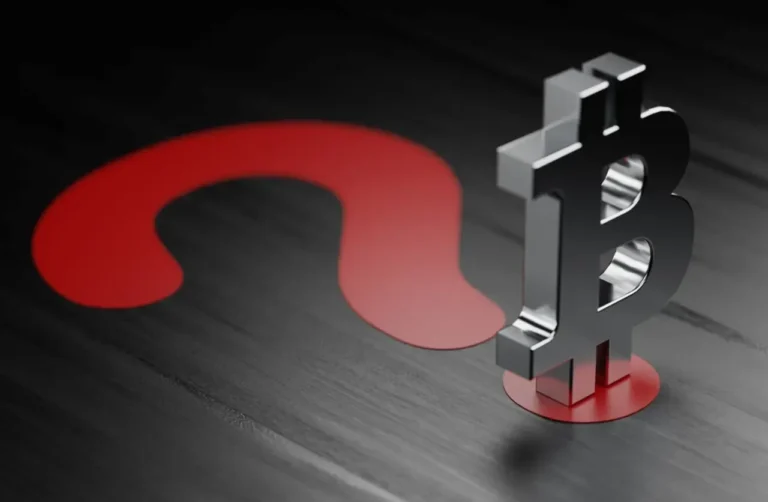Best Crypto Staking 2025 – Smart Way To Invest
Best Crypto Staking 2025 – Investment in the world of cryptocurrency has now become one of the most popular ways to generate profit in various countries.
However, despite its popularity, there are still many crypto enthusiasts who are unaware of the latest crypto trends, especially about what crypto staking actually is.
In the simplest definition, crypto staking is a way for your crypto assets to work and grow on their own—just like planting a seed that grows into a tree and eventually bears fruit.
If you’re interested in doing it, here we’ll walk you through how to stake crypto and provide various other important insights about staking, based on information from INDODAX.
Summary Key Takeaways
ShowWhat Is Crypto Staking?

Crypto staking is the process of storing or locking up cryptocurrency assets in a blockchain network to support the operation and security of that network, especially on blockchain networks that use the Proof of Stake (PoS) consensus mechanism and its variants.
By applying the best crypto staking strategies of 2025, you can make your crypto assets grow like a digital farm generating passive income.
How to Do the Best Crypto Staking in 2025
To be able to run the best crypto staking strategy in 2025 and increase the amount and value of your crypto assets, there are several steps you need to follow.
Here are the best crypto staking methods for 2025 that you can apply to make your assets work for you automatically.
1. Choose the Best and Most Trusted Crypto Exchange
The best crypto staking strategy in 2025 cannot be separated from choosing a reliable and reputable exchange available in your country. Make sure to check the track record of the exchange you choose—it should have a proven history of good performance and security.
2. Choose Coins That Can Be Staked
It’s important to know that not all coins or tokens can be staked. Crypto staking is an asset-farming strategy that can only be applied to coins or tokens using the Proof of Stake system or its derivatives.
3. Prepare a Suitable Wallet
Not all wallets support staking, because crypto staking is an investment strategy that requires wallets with staking support. Some recommended wallets include:
-
Trust Wallet (recommended for beginners)
-
Metamask (for Ethereum and various ERC tokens)
-
Yoroi (for ADA)
-
Phantom (for SOL)
-
Ledger (super secure recommendation)
4. Choose a Validator or Pool
One of the most important steps in the best crypto staking strategy for 2025 is choosing the right validator or staking pool.
Validators (entities that run and validate transactions) and pools (groups of investors participating in staking) play a major role in determining the level of risk and potential returns.
Select validators or pools that are trustworthy and have a good track record to maximize your earnings from crypto staking.
5. Choose the Type of Staking
Crypto staking is an investment strategy that comes in two main types, and it can be adjusted according to your needs as an investor:
-
Locked Staking – longer duration but higher rewards
-
Flexible Staking – you can stop staking at any time, but the rewards are lower
10 Coins and Tokens for the Best Crypto Staking in 2025

Crypto staking is a popular investment strategy for generating passive income from crypto assets.
By simply holding and “locking” certain coins, you can earn regular rewards without needing to constantly trade—while also deepening your understanding of how crypto staking works.
Here are some of the best coin and token recommendations for the best crypto staking strategies in 2025 that you can choose from:
1. Ethereum (ETH)
After successfully transitioning to a Proof of Stake mechanism, Ethereum now allows holders to earn rewards through staking.
Although it requires 32 ETH to run your own validator node, many platforms and pools allow you to stake with much smaller amounts. If you stake ETH correctly, the average reward you can earn is around 3–5% per year.
2. Cardano (ADA)
Cardano offers a user-friendly staking system in 2025. You can start staking without needing to lock your assets for long periods. Rewards typically range from 4–6% per year, and there are plenty of transparent and reliable staking pools available.
3. Solana (SOL)
Solana is known for its exceptional transaction speed compared to other crypto assets. For those looking to stake on an active and efficient network, SOL is a great choice. With estimated rewards of 6–8% per year, staking Solana can be done easily through wallets like Phantom.
4. Polkadot (DOT)
Polkadot is a rapidly evolving platform focused on blockchain interoperability. Its staking system is based on a nominator-validator structure, and rewards can reach 10–12% per year. With the right validator, the potential returns can be very promising.
5. Avalanche (AVAX)
Avalanche offers staking with estimated rewards of 8–10% annually. You can stake as a validator (with a minimum of 2,000 AVAX) or through more accessible platforms. The speed and efficiency of its network are definite advantages.
6. Tezos (XTZ)
Tezos uses the term “baking” for its staking process. The reward is relatively stable, around 5–6% per year. One of its key strengths is the ease of staking—even with a small number of tokens.
7. Cosmos (ATOM)
Cosmos envisions itself as the “Internet of Blockchains”, and staking in this network offers rewards of around 10% annually. Additionally, staking ATOM often gives you access to airdrops from new projects within the Cosmos ecosystem.
8. NEAR Protocol (NEAR)
NEAR is a fast and low-cost blockchain network. Staking NEAR in 2025 is relatively easy, whether through official wallets or exchanges. The average reward ranges from 10–12% per year.
9. Algorand (ALGO)
Algorand was once known for offering rewards simply by holding tokens in a wallet. Today, ALGO staking remains easy and beginner-friendly. Expected returns are around 4–6% per year.
10. BNB (Binance Coin)
As the native coin of Binance, BNB offers a wide range of staking options in 2025, both locked and flexible. Rewards vary between 5–10% per year. You can also join programs like Launchpool to earn new tokens through BNB staking.
10 Best Crypto Staking Platforms in 2025

After learning how crypto staking works, it’s important to also understand where to stake your assets—choosing the right platform is crucial for successful staking.
Below are the top recommended platforms for the best crypto staking in 2025 that you can consider:
1. Binance
Binance is one of the largest crypto exchanges in the world, offering staking services for a wide variety of crypto assets.
You can stake coins like BNB, ETH, ADA, and more—either through locked staking (for a set period) or flexible staking. The APY is competitive, and there are often promotional events that offer additional rewards.
2. Kraken
Kraken is known as one of the most secure and stable exchanges. They offer both on-chain and off-chain staking for assets like ETH, DOT, and ADA.
It’s ideal for beginners seeking a hassle-free staking experience with transparent processes and attractive yields.
3. Coinbase
Coinbase provides staking options for assets like ETH, Tezos, and Solana. The platform is extremely beginner-friendly, especially for users who prefer not to manage their own wallets.
Although the APY may be lower compared to other platforms, its security and regulatory compliance are major advantages.
4. Bybit
Bybit offers staking features as well as an “Earn” service that allows you to earn interest on your crypto assets.
They frequently run promotions with high APY for a limited time, making it suitable for short-term opportunities. KYC is required for certain features, but the process is relatively straightforward.
5. Lido Finance
Lido is the most popular decentralized staking platform for ETH. With Lido, you can perform liquid staking—meaning you still retain access to your assets (in the form of stETH) while earning staking rewards.
6. Rocket Pool
Rocket Pool is a decentralized and more inclusive alternative for ETH staking. You can start staking with as little as 0.01 ETH and still contribute to the validator network.
In addition to ETH rewards, you also earn RPL tokens. It’s a great option for users who want to support Ethereum’s decentralization.
7. Marinade Finance
Operating on the Solana network, Marinade Finance allows for flexible and liquid SOL staking.
You’ll receive mSOL as a liquid representation of your staked SOL, which can still be used in the Solana DeFi ecosystem. With high APY, it’s ideal for DeFi enthusiasts.
8. Osmosis
Osmosis is a DEX and staking platform at the core of the Cosmos ecosystem. You can stake tokens like ATOM or OSMO with attractive annual rewards.
Besides staking rewards, you’re also helping secure the network. The Keplr wallet makes staking here easy and accessible.
9. Ledger Live
If you use a Ledger hardware wallet, you can stake directly through the Ledger Live app.
It supports staking for coins like Tezos, ETH, and Polkadot. A major advantage is full control of your private keys—non-custodial and highly secure, perfect for users focused on safety.
10. Trust Wallet
Trust Wallet is a non-custodial mobile wallet that allows you to stake crypto directly through the app.
Popular assets like BNB, TRX, and Cosmos can be staked with just a few taps. Its user-friendly interface makes it a great choice for newcomers who want full control over their assets.
Risks of Crypto Staking

Although the best crypto staking strategies in 2025 may seem highly attractive, it’s important to consider the potential risks—especially if you dive in without proper analysis.
Below is a table outlining the common risks involved in crypto staking that investors may face:
| Type of Risk | Description | Example/Illustration |
|---|---|---|
| Price Volatility Risk | The price of crypto assets can drop significantly while staked, reducing overall value. | Staking SOL with a 7% APY, but SOL’s price drops by 30%. |
| Lock-Up Risk | Some staking methods are locked and cannot be withdrawn before a set period. | Early ETH2.0 staking, which couldn’t be withdrawn until network upgrades. |
| Smart Contract Risk | DeFi staking relies on smart contracts, which may have bugs or security flaws. | Platforms like Lido or Marinade may be hacked if vulnerabilities exist. |
| Slashing Risk | If a validator misbehaves (e.g., goes offline), a portion of your assets may be slashed. | In the Cosmos network, inactive validators can cause slashing. |
| Platform (Custodial) Risk | Staking through centralized exchanges can be risky if the platform goes bankrupt or is hacked. | The collapse of FTX caused many users to lose access to their assets. |
| Liquidity Risk | Not all staked assets can be immediately sold or exchanged when needed. | stETH from Lido may have price differences compared to regular ETH. |
| Coin Inflation Risk | Some coins offer high staking rewards by increasing supply, which can lower the coin’s value. | New tokens with high APY but continuous token printing. |
| Protocol Change Risk | Staking rules or mechanisms may change due to network upgrades. | Ethereum changed its staking mechanism after the Merge and Shanghai upgrades. |
Stake Your Crypto Assets with Proper Analysis
Crypto staking is one of the most appealing investment strategies in 2025, especially for investors seeking passive income without engaging in frequent trading.
By choosing the right coin, a trustworthy platform, and a staking method that suits your investor profile, you can maximize the potential return on your crypto assets.
Understanding risks like price volatility, platform reliability, and smart contract vulnerabilities will help you make wiser and safer staking decisions.
With solid knowledge and thorough analysis, the best crypto staking in 2025 can be your path to “planting” digital assets today and “harvesting the results” in the future.
Frequently Asked Questions (FAQs)
What is crypto staking and how does it work?
Crypto staking is the process of locking up your crypto assets in a blockchain network—particularly those that use Proof of Stake (PoS)—to help secure and operate the network. In return, you receive rewards in the form of additional tokens, similar to earning interest.
Which coins are best for staking in 2025?
Some of the most recommended coins for staking in 2025 include:
-
Ethereum (ETH) – 3–5% APY
-
Cardano (ADA) – 4–6% APY
-
Solana (SOL) – 6–8% APY
-
Polkadot (DOT) – 10–12% APY
-
NEAR, AVAX, ATOM, XTZ, ALGO, and BNB also offer competitive returns.
What are the main risks involved in crypto staking?
Some key risks to consider:
-
Price volatility: Your staked asset’s value might drop.
-
Lock-up periods: Some staking methods prevent early withdrawal.
-
Smart contract risks: Vulnerabilities in DeFi platforms.
-
Slashing: Penalties if validators behave maliciously or go offline.
-
Custodial risk: Centralized exchanges may fail or get hacked.






